Chelsea Flower Show unfurled: a year of pause, thought and promise
This week’s RHS Chelsea Flower Show – now in its 112th year – has begun to reveal its defining spirit. This year is one of tentative readjustment: a reassuring exploration of the ‘future garden’, and the ways in which landscape design might tackle climate and conservation challenges
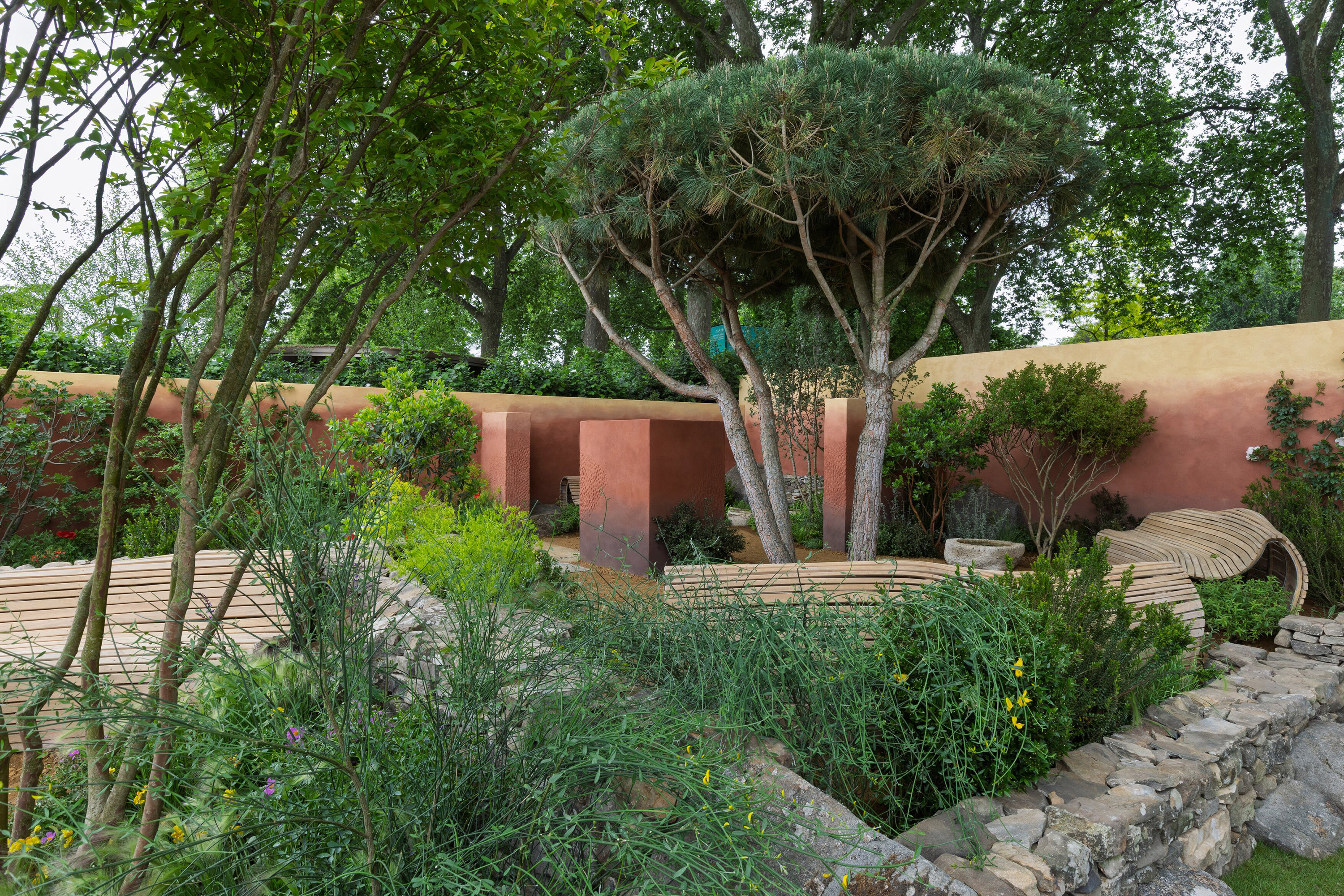
There is always a level of sifting to do, when attempting to decipher the essence of a Chelsea Flower Show; determining the overarching zeitgeist of the event, and the legacy it might leave. Across the first 48 hours, for example, you must allow the dust of the frenzied build to settle, and the energy and emotion that follows the judges’ verdict – delivered always on the Tuesday of show week – which sees the designers, growers and floral exhibitors awarded medals from gold to bronze. You must peer awhile into the recesses of each plot, and blot out, if you can, the chorus of chatter and that swirls through the avenues and walkways of the show ground at London’s Royal Hospital Chelsea. Gardens, after all, are by their nature reposeful places, and are best interpreted – or felt – in moments of inward quiet.
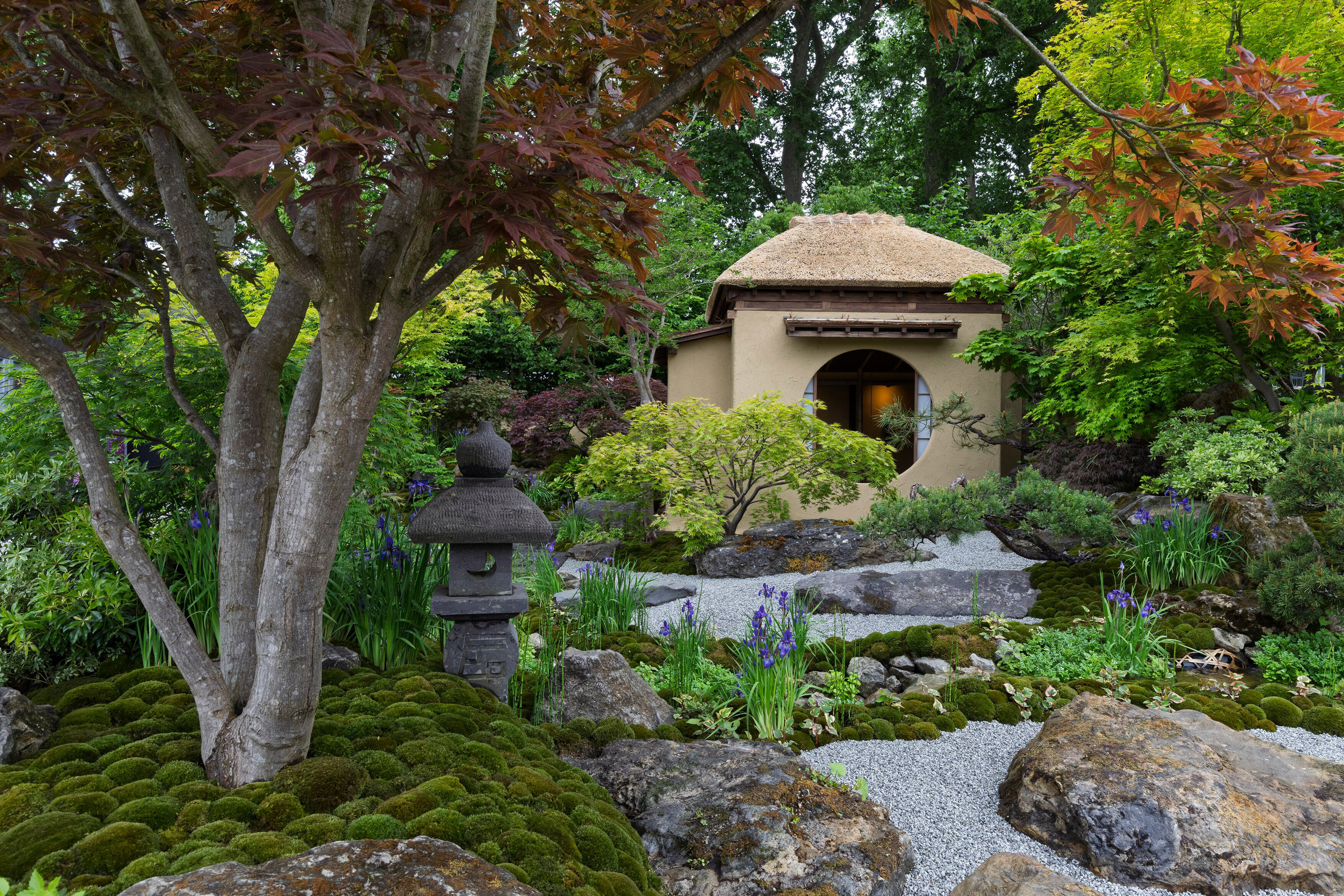
Hospice UK: Garden of Compassion. Designed by Tom Hoblyn. Show Garden. RHS Chelsea Flower Show 2025
Over the years, the spirit of each Chelsea Flower Show has been distilled through certain permeating qualities: a particularly pervasive colour scheme, for example, or indeed a recurring palette of plants – in 2023, notably, the championing of everyday ‘weeds’ like the dandelion and nettle, which cropped up in multiple exhibits. Other years, the lasting takeaways have included themes of biodiversity-increase, bold architecture, floral abundance, or, contrastingly, soothing green ‘naturalism’. These overarching trends often contrast year to year, and inevitably betray something of the wider culture, climate and concerns of the time.
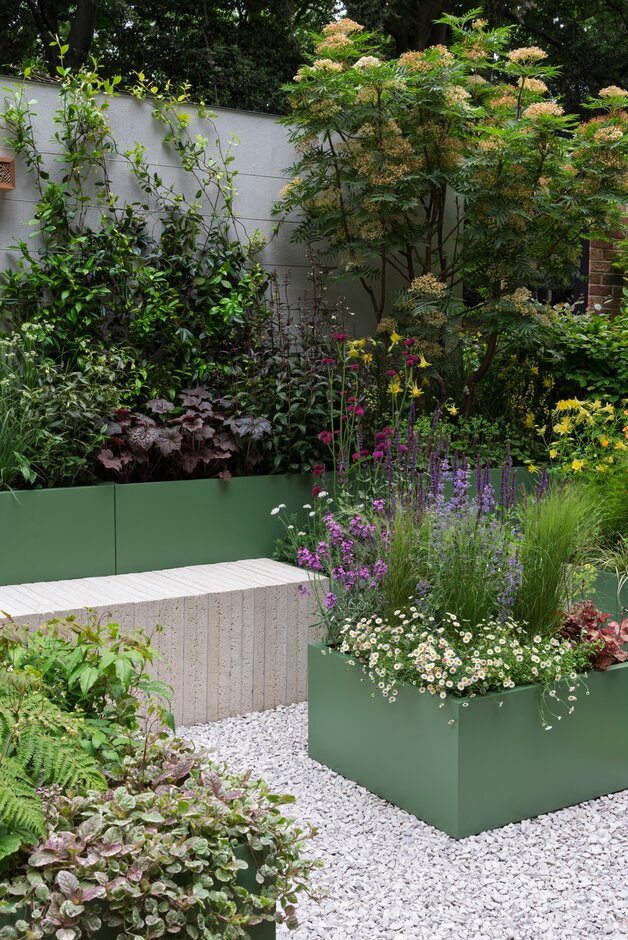
A container garden by Hamzah-Adam Desai: MS Amlin Peace of Mind Garden, site no. 808
If last year’s exhibits were united under a loose theme of ‘refuge’ – of gardens as vital sanctuaries for mental wellbeing – this year, the line of best fit reveals one of thoughtful readjustment, with many designers (including those behind the feature Show Gardens along Chelsea’s Main Avenue but also the smaller exhibits and ‘Balcony’ and ‘Container’ gardens) building into their show pieces a dimension of creative environmentalism, and exploring ways in which the gardens of the future might be made to weather – or indeed, actively combat – our rapidly changing climate.
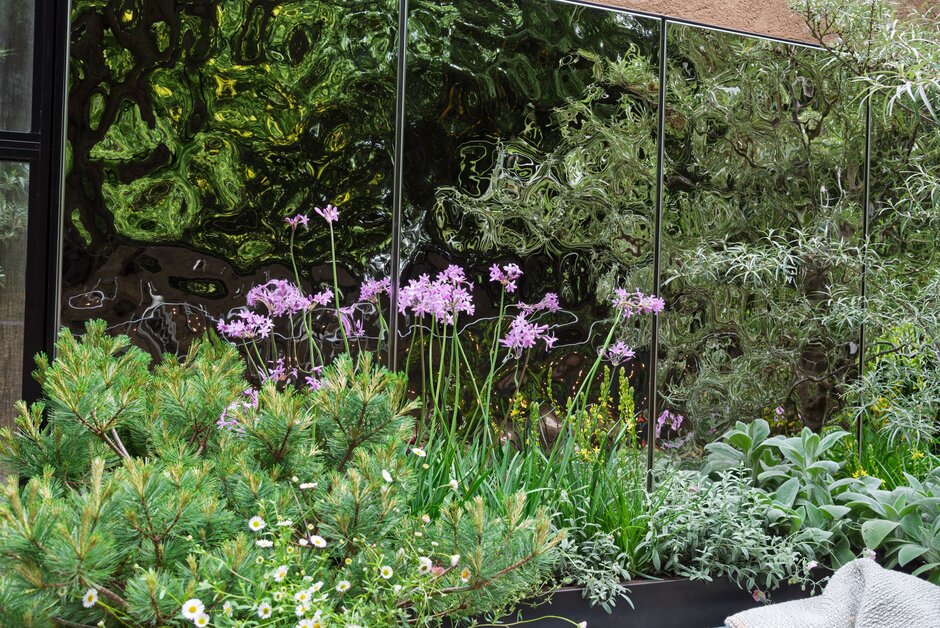
A balcony garden by Ashleigh Aylett: Navium Marine: Blue Mind Garden (site no. 805)
‘Sustainability’, of course, has been a trend at Chelsea for a years now, with the RHS endeavouring to lessen the show’s environmental impact by banning single-use plastics, pushing exhibitors towards peat-free composts, relocating show gardens to ‘forever homes’ following the event and implementing a ‘Green Garden Audit’ intended to reduce the carbon footprint of the larger show garden exhibits.
In 2025, however, there is at last a sense that the subject has become almost implicit within the fabric of the gardens themselves, with so many designers responding to climatic and conservation concerns with thoughtful, experimental innovation. This year, there is a tantalising sense of Chelsea’s potential as a platform for new thinking – that it could couple horticultural and architectural artistry with genuine efforts to promote meaningful change: to question outdated practices, alter mindsets, present solutions for waste reduction and biodiversity increase and demonstrate how gardens can play a vital role in future public and environmental welfare.
'This year, there is a tantalising sense of Chelsea’s potential as a platform for new thinking – that it could couple horticultural and architectural artistry with genuine efforts to promote meaningful change'
Matt Collins
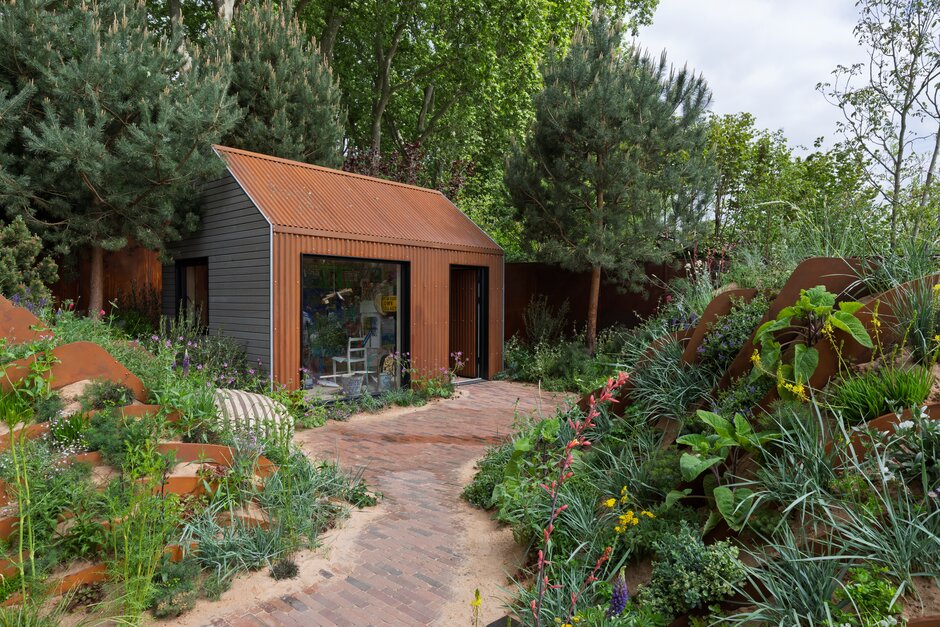
Nigel Dunnett’s Hospitalfield Arts Garden
We see this, for example, in the architectural ‘rain-scaping’ of Baz Grainger’s small ‘Save For a Rainy Day’ show garden – awarded gold yesterday – with its permeable pathways providing flood-water management and its cantilevered pavilion capturing runoff rainwater (all the more poignant in the context of a spring that, alarmingly, might prove the UK’s driest in over a century). We see it, too, in the great sand dunes of Nigel Dunnett’s Hospitalfield Arts Garden, promoting the use of inorganic aggregates as low-input alternatives to pampered topsoil.
We see matters of conservation expressed with deep creativity in exhibits such as Ryan McMahon’s ‘Seawilding’ garden, which has brought aquatic seagrass to Chelsea for the first time – grown in a saltwater pool surrounded with craggy sandstone – and which spotlights the importance of marine conservation. It’s seen in the carbon sequestering planters of Joshua Fenton’s ‘C6’ Container garden; in the provision for songbirds that underscores Nicola Oakey’s All About Plants-category garden; in the climate-resilient crops micro-farmed in Matthew Parker & Josh Butler’s ‘Garden of the Future’, and the mycelium-bonded panels of Tom Massey and Je Ahn’s pavilion.
Receive our daily digest of inspiration, escapism and design stories from around the world direct to your inbox.
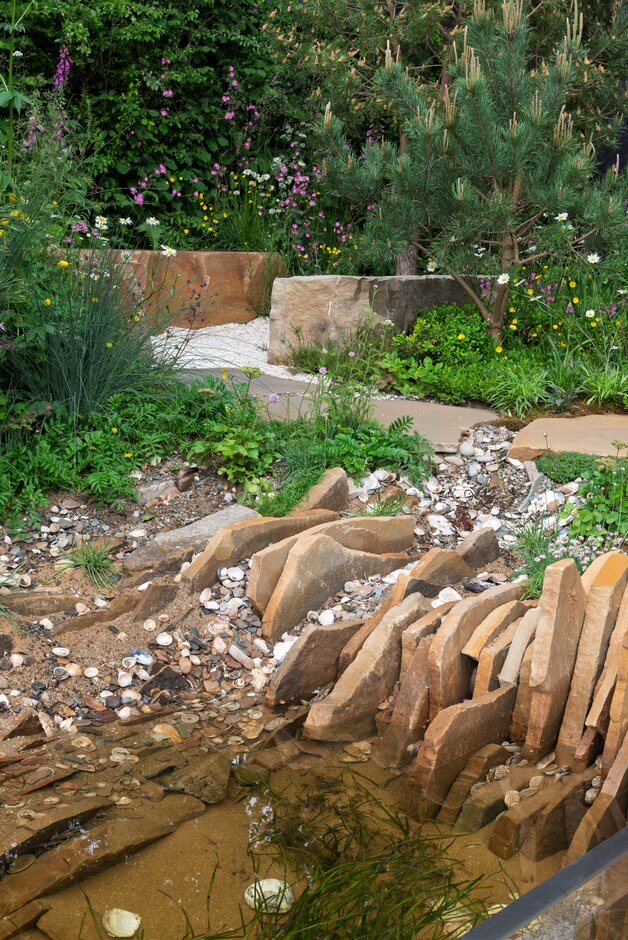
Ryan McMahon's Seawilding (All About Plants, site no. 341)
This isn’t to say that Chelsea no longer comes at an environmental cost – the construction of temporary gardens is inescapably demanding of resources – but that there is an enticing sense of the show’s function beginning to morph. As ever, beautiful plants are in abundance this year (not least in the Great Pavilion, where I encountered blue Himalayan poppies and magnificent ferns like none I’d ever seen before), but they are no longer the sole message.
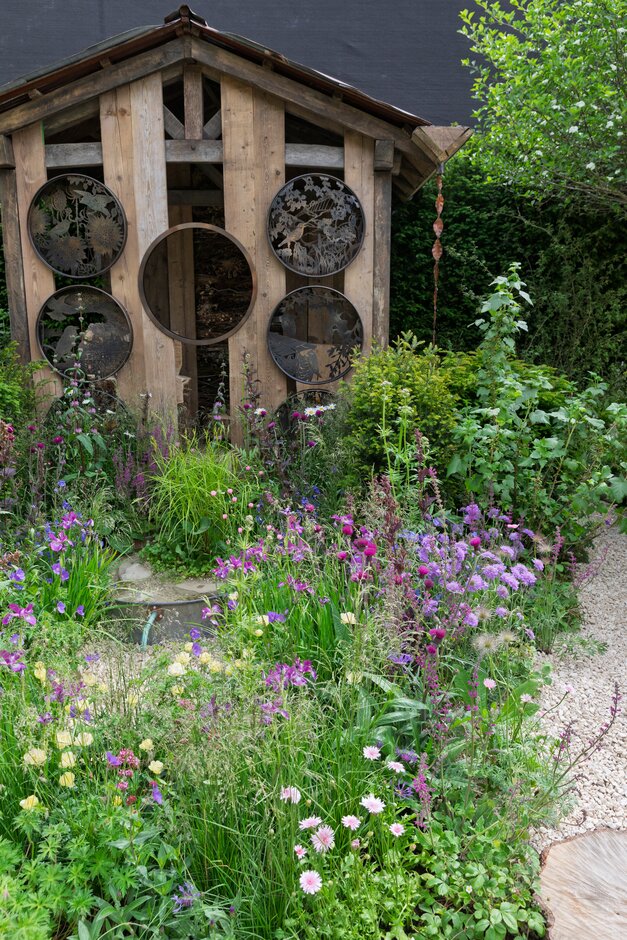
Nicola Oakey's SongBird Survival Garden (All About Plants, site no. 120)
For me, if one exhibit sums up the zeitgeist of RHS Chelsea 2025 it is the garden designed by Allon Hoskin and Robert Beaudin for homeless charity Pathway. Representative of the journey made from homelessness to recovery and safety, the garden takes the form of a pathway through lush productive woodland, with metaphorical obstacles presented in the physical form of stone boulders, and fungal-structured pillars symbolising interconnectivity and the charity’s nurturing networks of health-provision. The garden is free of concrete footings and built with recycled materials, from its pergola made from wind-damaged redwood trees and up-cycled scrap steel to cut York stone pavers reclaimed from a cow barn. The pillars demonstrate the use of fungal mycelium as an innovative new biodegradable construction material, while at the same time highlighting fungal networks as the essential, historically undervalued building blocks of life on earth. The planting is refreshingly simple and garden-realistic, with bold brush strokes of geranium, rodgersia and baptisia only enhancing, rather than distracting away from, the resounding message of the garden. It is a deeply thoughtful garden that is inherently future-facing – not bad for a ‘flower show’.
Chelsea Flower Show 2025 runs until May 24th. Get tickets.
Matt is an award winning garden, landscape and travel writer, and Head Gardener at the Garden Museum in London. Trained at the Botanic Garden of Wales, Matt has contributed articles and essays for publications including The Guardian, The Times, Gardens Illustrated magazine and Hortus. Matt’s interests lie at the intersection between cultivated and natural environments; his latest book, Forest, Walking Among Trees (Pavilion) traces an intercontinental pathway between British trees and their wild-wooded counterparts.
-
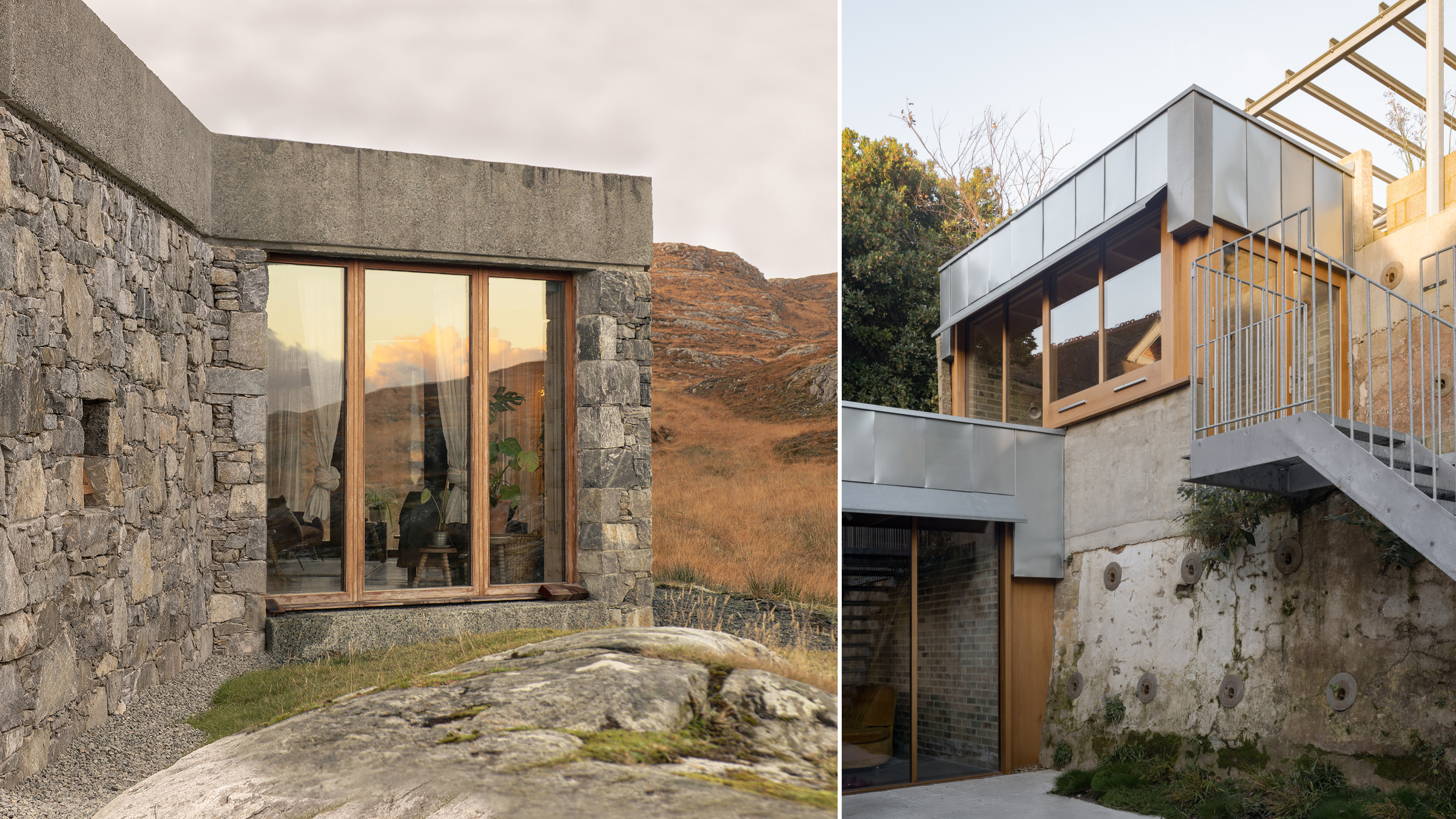 RIBA reveals the first pair of shortlisted structures for the House of the Year 2025
RIBA reveals the first pair of shortlisted structures for the House of the Year 2025Six practices are up for the award, which will be announced on Grand Designs in December. The first two houses, by Izat Arundell and Hugh Strange Architects are previewed below
-
 The Wallpaper* gift guide for the travel obsessed
The Wallpaper* gift guide for the travel obsessedConstant wanderlust is a surprisingly useful trait when it comes to gifting. Explore what to gift the discerning globetrotter
-
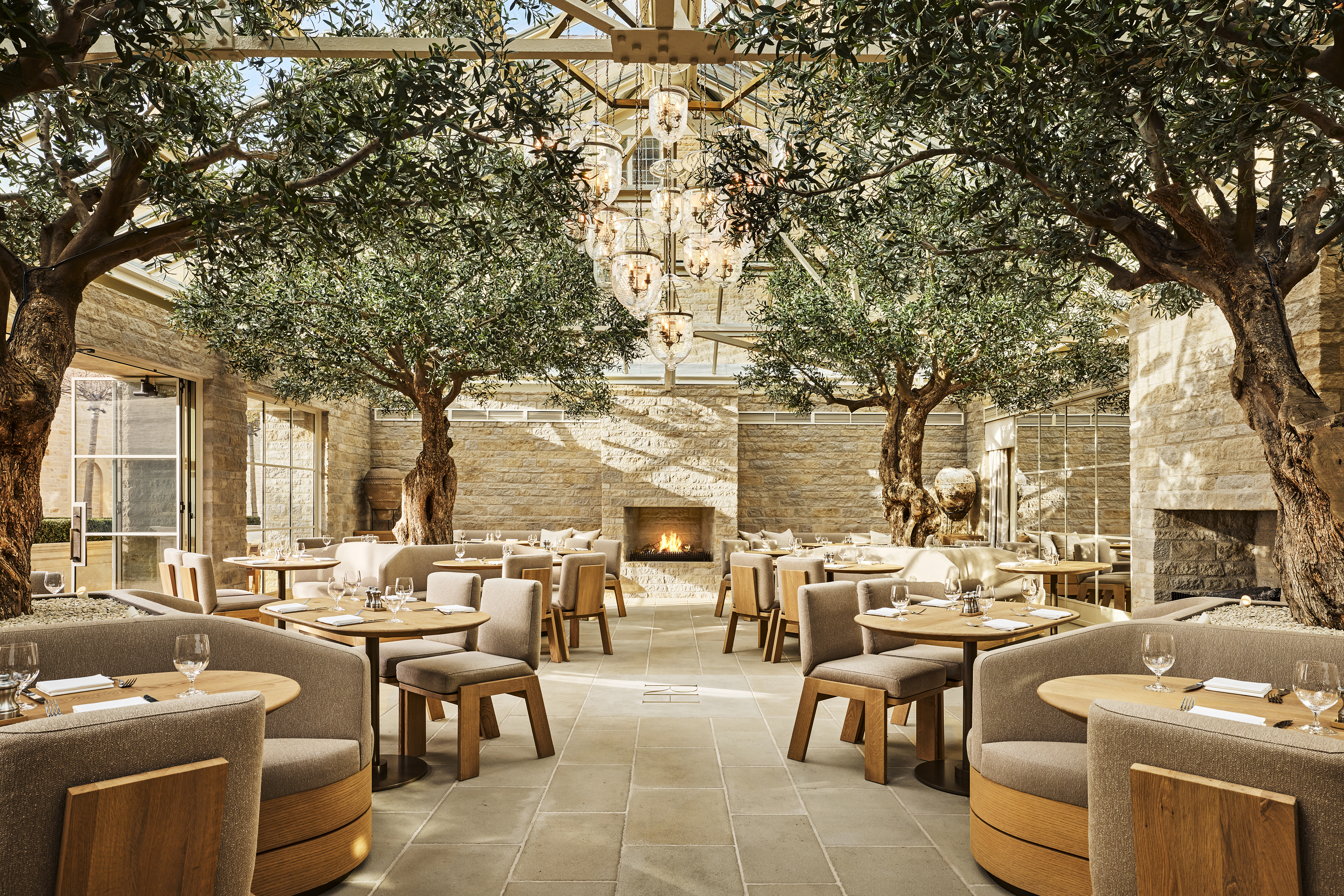 Inside the new Conservatory at RH England, Aynho Park
Inside the new Conservatory at RH England, Aynho ParkRH unveils a conservatory dining space at its English estate and design showcase, featuring a bespoke chandelier designed by Anouska Hempel
-
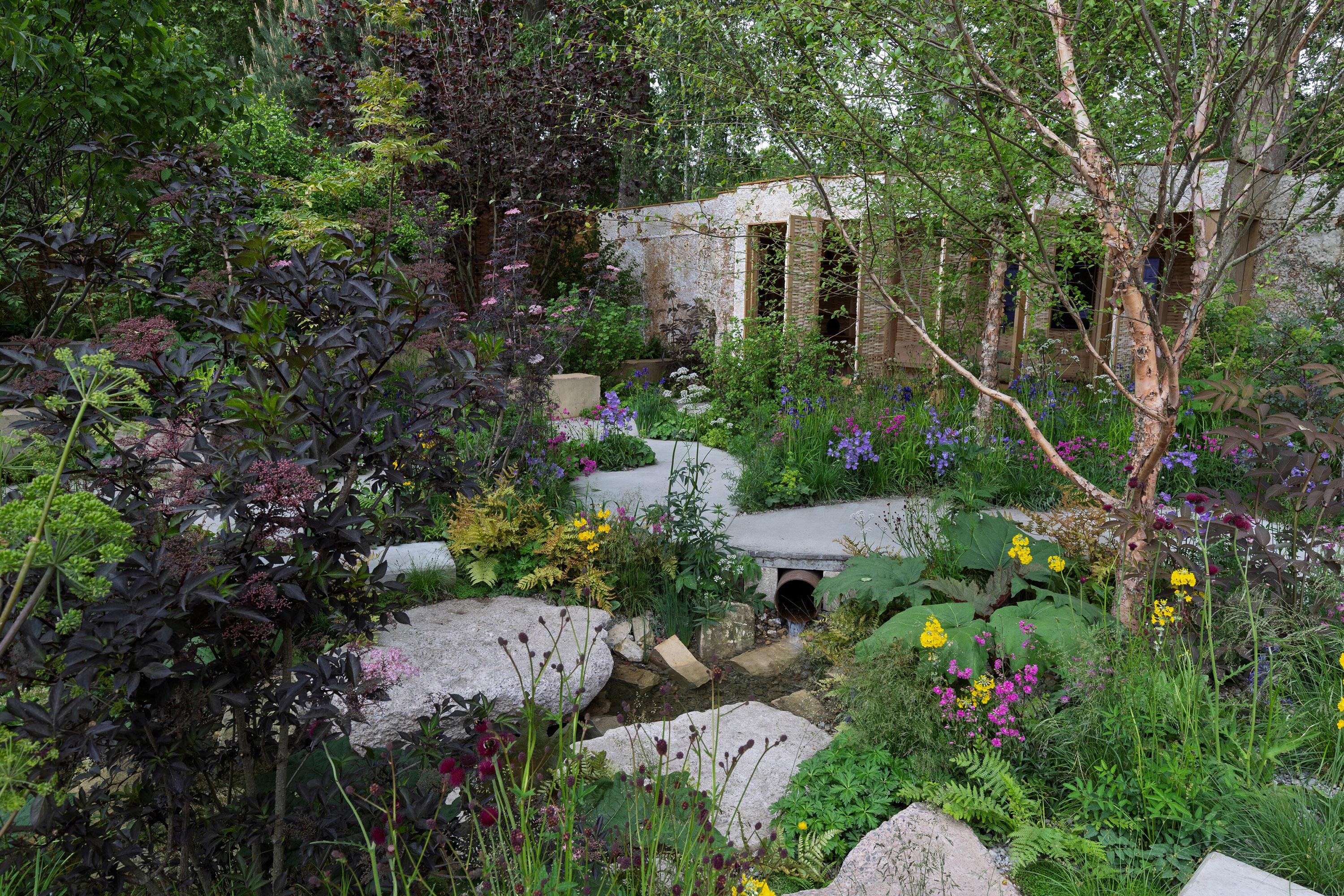 Use of architectural fungi exhibits a greener side to the RHS Chelsea Flower Show
Use of architectural fungi exhibits a greener side to the RHS Chelsea Flower ShowTom Massey and Je Ahn’s ‘Avanade Intelligent’ gold medal-winning show garden leans into the RHS’ aspirations for a more sustainable Chelsea Flower Show
-
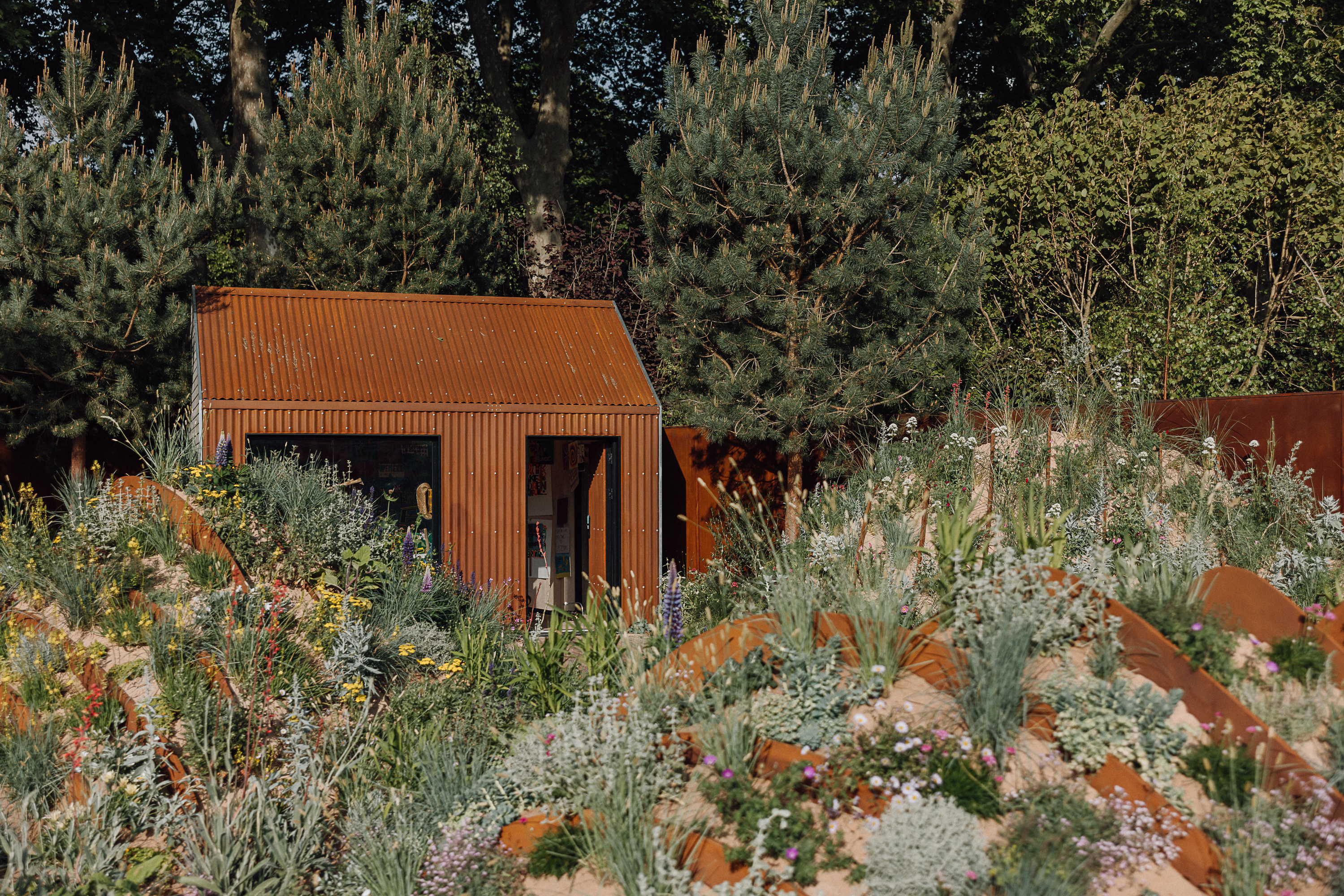 Innovative coastal garden turns heads at this year’s RHS Chelsea Flower Show
Innovative coastal garden turns heads at this year’s RHS Chelsea Flower ShowLandscape Designer Nigel Dunnett’s ‘Hospitalfield Arts Garden’ at Chelsea Flower Show 2025 has been making waves with its progressive approach to sustainable landscape and planting design